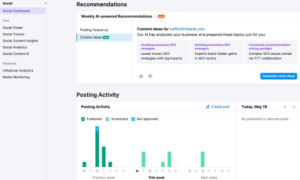Crane scale load cells are useful in numerous applications as load measuring systems. Whether it’s about weight measurement, or force or tension measurement, these measuring systems are reliable. You can also rely on crane scale and wireless load cells for overload prevention and safety inspection. Crane scales can be of two types based on the number of cranes that the crane scales include, such as a) single-point load monitoring system, and b)multi-point load monitoring system. Besides discussing these two types of systems, we will describe the characteristics and applications of the crane scales in this article.
Crane Scales Classification:
-
Single-Point Load Monitoring System:
This system involves a single crane. In this system, the monitoring system is situated below the crane’s hook to measure the weight of the lifted material. When it comes to general weight measurement for a lifted material, this measuring system is effective.
-
Multi-Point Load Monitoring System:
When you need to measure the weight of the heavy loads, you can not rely on a single crane to lift the loads. Instead, you require to multi-point load monitoring system that helps to elevate heavy loads and manage the complex lifting through multiple cranes. In order to sustain harmony during lifting, this system has multiple cranes and load cells. In the entertainment industry, this system is useful to prevent overloads and manage suspended sound, control, and video equipment in order to ensure the safety of the audience and performers.
Crucial Features of Crane Scales:
The crane scales should provide some crucial features, such as
-
Data Transmission Capability:
The transmission of data to the display or receiver is an essential feature that the crane scales should provide. There should be a connection between the monitoring software and receiver in order to collect data from several load cells and show the measurement on the road map.
-
Accuracy and Display Facility:
When it is about weight and force measurement, the crane scales have to be very accurate. These systems also include several large displays.
-
Shackle Holes:
The measuring system should include shackle holes along with a 90-degree offset in order to reduce flexing.
-
Safety and Durability:
The manufacturers should use aerospace steel to prepare the body of the system in order to ensure the safety and durability of the system.
-
Battery Life:
The system should offer exceptional battery life (at least 2000 hours) along with rechargeable batteries and chargers.
-
Alarm and Data Logging:
The crane scale load cells should have limitless data logging and alarm features.
-
Environmental Flexibility:
Environmental flexibility and weatherproof facility are also crucial to keep the system usable in seasonal changes.
Applications:
Crane scale load cells have an enormous number of applications in numerous industries such as aerospace, shipyards, militaries, wind turbines, heavy industries, some high-temperature productions, ports, foundries, gas and oil extraction industries, offshore applications, electricity companies, etc. Whether it’s about controlled cable tensioning and monitoring or drag and pull force measurement, these load measuring systems are essential. Above all, crane scales can help you to safeguard infrastructure, personnel, and equipment against damage from overloads.



































